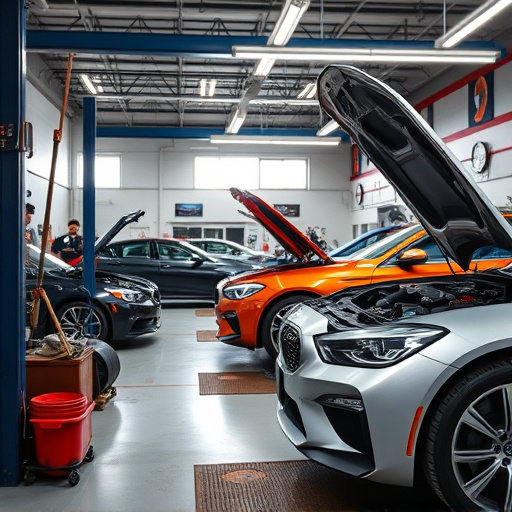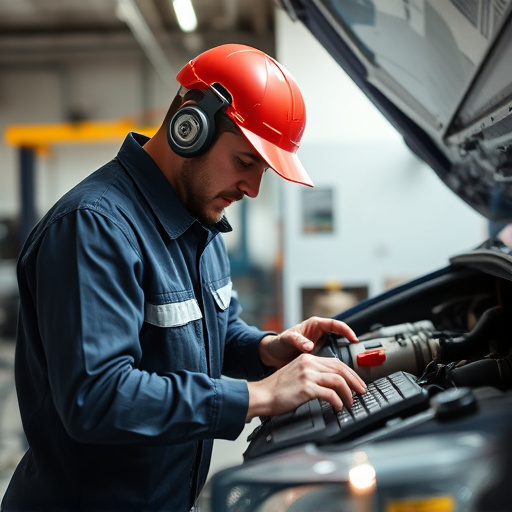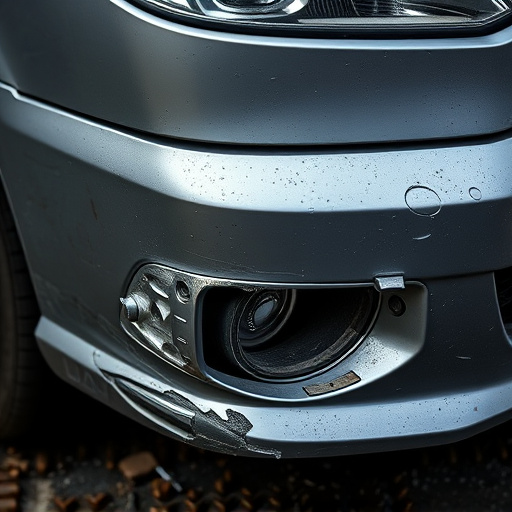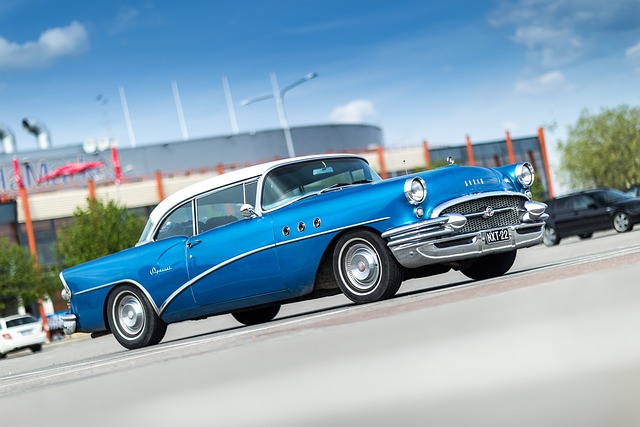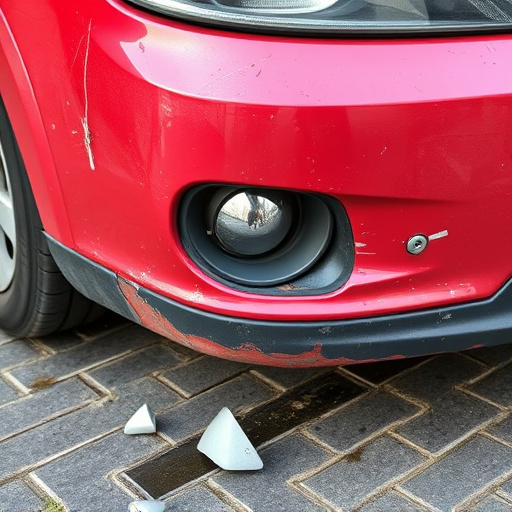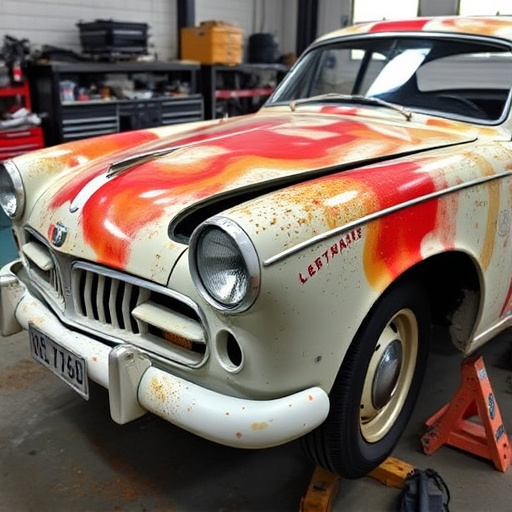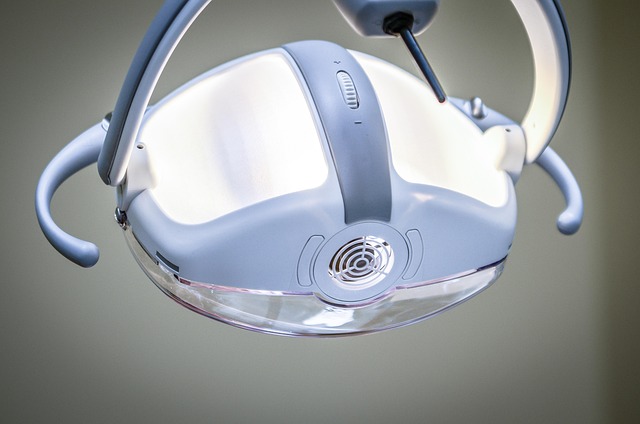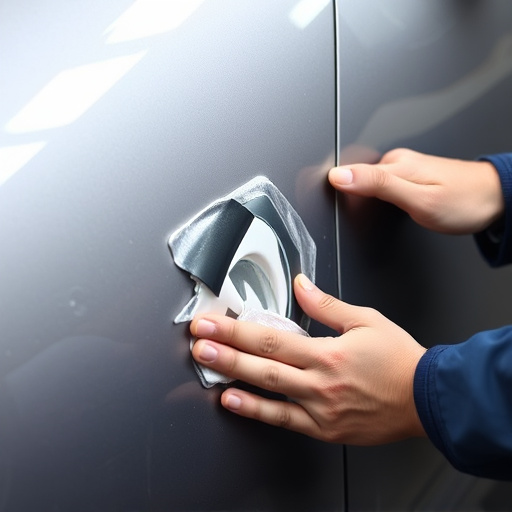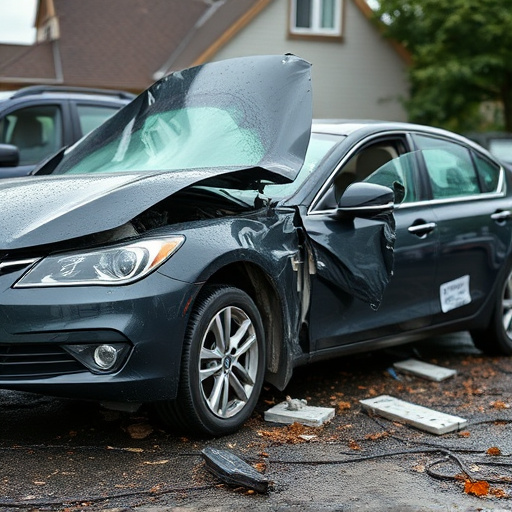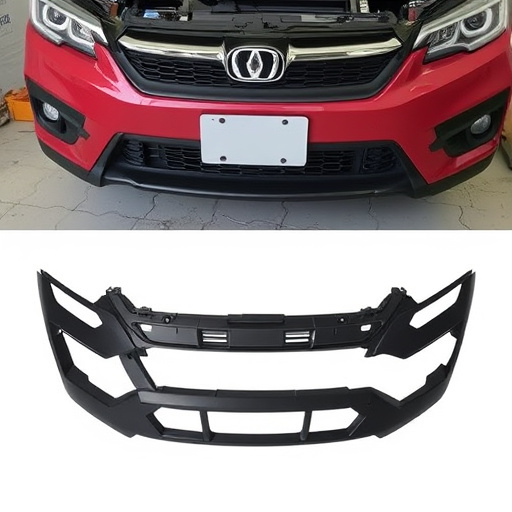Preparing workspace and car body is key for clear coat application. Invest in quality tools and clean car bodywork thoroughly. Understand hard vs soft clear coats based on repair scope. Follow step-by-step guide for professional clear coat application, starting with surface preparation and ending with thin, even layers.
Looking to revive your ride with a professional-grade clear coat job? This guide is your roadmap for DIY auto repair enthusiasts. We’ll walk you through preparing your workspace, demystifying clear coat types and their properties, and providing a step-by-step approach for successful application. Achieve a sleek, durable finish that reflects your passion for automotive care with these expert tips on clear coat application.
- Prepare Your Workspace for Seamless Application
- Understanding Clear Coat Types and Their Properties
- Step-by-Step Guide: Applying Clear Coat Like a Pro
Prepare Your Workspace for Seamless Application
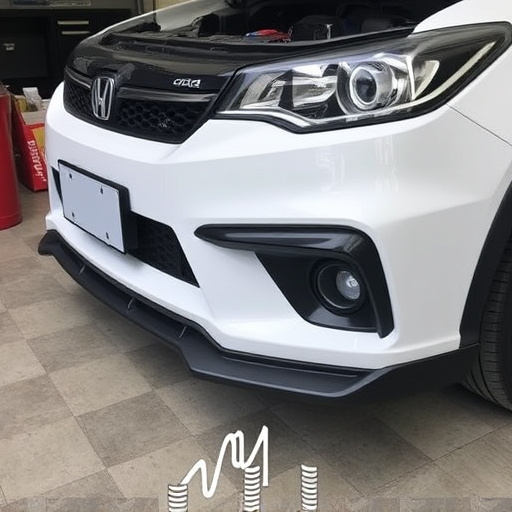
Before tackling any clear coat application, preparing your workspace is a crucial step that cannot be overlooked by DIY auto repair enthusiasts. Start by clearing a dedicated area in your garage or workshop, ensuring it’s well-ventilated to mitigate exposure to potentially harmful fumes. Cover nearby surfaces with drop cloths or old towels to protect them from overspray and debris. Invest in high-quality tools such as a pressure washer, sandpaper, and a clear coat gun – these will make the process smoother and more precise.
A tidy workspace is half the battle won when it comes to successful clear coat application. This involves not just organizing your tools but also ensuring your car’s bodywork is clean and free from dirt, grease, and previous coatings. Consider using dedicated car washing solutions and microfiber cloths for a thorough cleaning. For older vehicles undergoing restoration, professional car bodywork services can play a pivotal role in preparing the surface, enabling you to achieve a flawless finish with your auto painting efforts.
Understanding Clear Coat Types and Their Properties
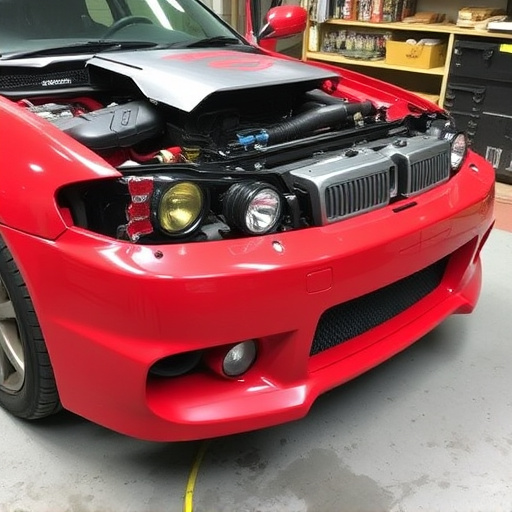
When it comes to clear coat application for DIY auto repairs, understanding the types and properties of clear coats is crucial. Clear coats are protective layers that enhance the finish of vehicle bodywork, providing a durable barrier against environmental factors like UV rays, scratches, and stains. They’re typically categorized into two main types: hard clear coats and soft clear coats. Hard clear coats offer superior durability and resistance to scratches but may take longer to cure. Soft clear coats, on the other hand, are easier to apply and have a slightly softer finish that’s less prone to chipping but offers less protection against severe weather conditions.
Knowing these properties is essential for successful clear coat application. For instance, if you’re focusing on minor scuffs or dents in your vehicle dent repair process, a soft clear coat might be suitable as it’s easier to work with. However, for extensive bodywork repairs and achieving a seamless finish, a hard clear coat will provide the best results, though it requires more patience during the curing process.
Step-by-Step Guide: Applying Clear Coat Like a Pro
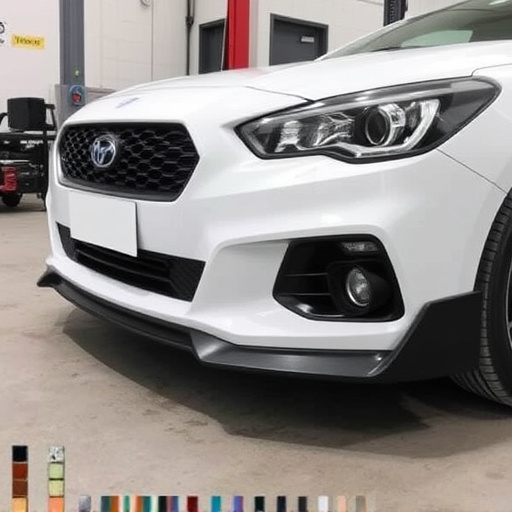
Applying a clear coat is an essential step in achieving a professional finish during DIY auto repairs, especially for projects like fender repair, bumper repair, or car damage repair. Here’s a straightforward guide to help you master this art.
First, ensure your vehicle surface is thoroughly cleaned and prepared. This involves sanding down the damaged area to create a smooth base. Remove any dust or debris with a clean cloth. Next, apply an appropriate primer designed for clear coat to seal the metal and provide better adhesion. Let it dry completely. After the primer dries, you’re ready for the clear coat. Use a high-quality clear coat product suitable for your car’s paint type and spray it evenly in thin layers, working quickly before it dries too much. Allow each layer to cure as per the manufacturer’s instructions before applying another. This meticulous process will result in a sleek, protective finish that matches your vehicle’s original appearance, bringing your DIY auto repair project to a satisfying conclusion.
For DIY auto repair enthusiasts looking to master the art of clear coat application, this guide offers a comprehensive roadmap. By preparing your workspace, understanding clear coat types, and following the step-by-step instructions provided, you’ll be able to achieve professional-grade results. Clear coat application is not just about enhancing the exterior of your vehicle; it’s a testament to your skill and dedication. So, gather your tools, protect your workspace, and get ready to transform your car with a glossy, protective finish that will turn heads and withstand the test of time.
